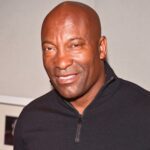Is playing big-time college sports an extracurricular activity or a job?
Two law professors at Michigan State University, Robert and Amy McCormick, think it is definitely a job for football and basketball players on athletic scholarships at Division I schools.
The married couple has added a new dimension to the long debate over paying athletes by arguing they are “employees” under federal labor laws and entitled to form unions and negotiate wages, hours and working conditions.
“There are more demands put on these young men than any employee of the university,” says Robert McCormick, who was an attorney for the National Labor Relations Board (NLRB) under Jimmy Carter. “These young men are laboring under very strict and arduous conditions, so they really are laborers in terms of the physical demands on them while they’re also trying to go school and being required to go to school.”
The way football and basketball players in Division I programs manage juggling sport and school, the McCormicks maintain, undermines the NCAA’s contention they are student-athletes.
“Athletes don’t have free choice of what major they take, if the classes conflict with practice schedules,” Amy McCormick says. “That’s one fact that flies in the face of the idea that they’re primarily students and secondarily athletes.”
Donald Remy, the NCAA’s general counsel and vice president for legal affairs, says court precedents and tax laws have upheld the status of college athletes as students.
“The NCAA, in accordance with courts that have addressed the issue, believes that student-athletes are not employees, under the law, and that they should not be treated as employees either by the law or by the schools they attend,” Remy says. “Moreover, taxing authorities do not consider the benefits student athletes receive to be taxable compensation.”
Other labor lawyers disagree with the McCormicks’ legal interpretation, which the professors concede is not popular.
“It’s a provocative argument,” says Jerry M. Hunter, a former general counsel of the NLRB. “I think that neither the National Labor Relations Act nor common law supports their position that student-athletes are employees.”
Hunter, a partner at Bryan Cave, a major law firm based in St. Louis, says the athletes “went there to get a college degree. They just happen to be playing sports.”
Many at major collegiate programs never get a degree, the NCAA’s own statistics show. Former players who did graduate may be less inclined to think they were “employee-athletes,” as the McCormicks call them.
“I never felt like I was an employee of Duke University,” says Tommy Amaker, a basketball star there who now coaches Harvard University’s team, which does not offer athletic scholarships. “I had a chance to have my education paid for at an incredible school.”
Amaker says as a Duke player and as head coach Seton Hall and Michigan before coming to Harvard, scheduling conflicts between class and practice were resolved without sacrificing academics. The player might postpone taking that course until summer or the team could take a NCAA-mandated day off. “There are ways to work around it,” he says.
Willie Hicks Jr. expresses ambivalence about whether he was an employee at Boston College, where he was the first black quarterback on its football team.
“There are similarities to it being a job, as I look back. There is a time allotment that is expected of you,” says Hicks, a 1991 graduate who grew up in Mattapan and co-owns Hicks Auto Body in Dorchester. But he feels “blessed” to have been able to attend BC without paying for his tuition, dormitory room and books.
Remy says “athletes attend college as a privilege and are provided the unique opportunity to earn a degree and at the same time compete in intercollegiate athletics. That opportunity is incongruent with the notion of being an employee.”
Both Amaker and Hicks went to private schools, a minority in Division I athletics. A significant limitation to the McCormicks’ case is that federal labor law applies only to private employers — and not to the state universities that dominate college sports. The Michigan State professors say the 32 states with laws similar to the National Labor Relations Act usually write them to conform to basic definitions in federal law.
Hunter points out, though, that most southern states don’t have similar labor laws. That would leave out such powerhouses as the University of Georgia, University of North Carolina and University of Texas — even if the argument that the McCormicks first made five years ago in the Washington Law Review were to prevail in federal courts or before the NLRB.
In that article, the McCormicks analyze whether Division I football and basketball players are really employees under common law and the NLRB’s 2004 decision that graduate assistants at Brown University were students, not employees.
The common law has three tests: the right of others to control a person’s activities, and whether that person is compensated and is also economically dependent on that compensation. The law professors find that college athletes meet all three because a coach has much control over what they do, an athletic scholarship amounts to compensation and players depend on those funds for food and shelter as well as schooling.
“The right of control is the biggest one,” Robert McCormick says. “They (coaches) have such control over the lives of the young men and at the end of the season or sometimes even during the season, they can say, ‘You’re fired.’ ”
The NCAA limits athletic scholarships to one year, renewable for a total of four years of playing. A scholarship can be withdrawn for not following the coach’s rules or any other reason.
In their analysis of the Brown University decision, the McCormicks conclude the status of athletes differs from graduate assistants’. The professors say athletes are not primarily engaged in learning, play sports unrelated to their course of study and fall under the supervision of coaches rather than faculty members. The McCormicks dispute the NLRB’s finding on the fourth test, which has to do with compensation.
“In our judgment young men playing major football and basketball are not there primarily for an education. They’re primarily there to win football games and basketball games and perform well,” Robert McCormick says.
Hunter disagrees with their, analysis and doubts that Obama’s appointees to the NLRB would accept it even though “as soon as they get around to it, they’re going to overturn Brown” and let graduate assistants unionize nationwide.
“I don’t even think Obama’s board would go as far as saying student-athletes at private colleges are employees. I’d be willing to bet money,” says Hunter, the board’s general counsel under former President George H. W. Bush.
The McCormicks realize that unionizing football and basketball players is not going to happen soon.
“They’re 18-year-old kids and 19-year-old kids. They’re not thinking about union organizing. They’re just trying to make it to the team and get to the pros,” Robert McCormick says. “Plus the public is not in favor of this — and the judiciary and the legislatures and the prosecutors and public officials. This is not a popular idea.”
Adds Amy McCormick: “Public opinion is the only thing that could cause a change. It’s long term.”
Dr. Boyce Watkins, a scholar in residence at Syracuse University, is more optimistic. “It’s going to happen. The solution will lie in the courts or with Congress,” says Watkins, a passionate advocate for “fair market compensation” for college athletes.
Others favor supplementing scholarships so that the athletes can pay for incidentals, trips home for school vacations or parents’ travels to big games. The National College Players Association, led by former UCLA football player Ramogi Huma, is pushing for an increase in a scholarships’ size. Amaker and Hicks agree the idea has some merit.
“I’m not in favor of athletes being paid. I would be in favor of a stipend,” Amaker says.
Hicks calls for “a strong consideration” of a stipend or allowance.
The McCormicks say that a fear of players having union rights is helping make that goal more attainable.
“I think when we make our kind of argument, it gives people who have more modest goals more bargaining power,” says Amy McCormick. “In other words, the NCAA would rather give in on small things in order to take off the pressure to do wholesale reform. Our argument really scares the NCAA.”






